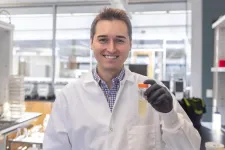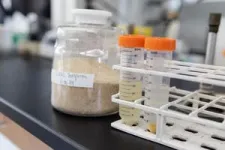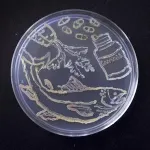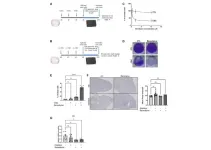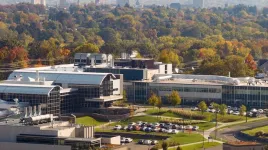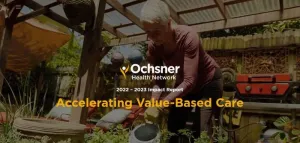(Press-News.org) We often look to the smallest lifeforms for help solving the biggest problems: Microbes help make foods and beverages, cure diseases, treat waste and even clean up pollution. Yeast and bacteria can also convert plant sugars into biofuels and chemicals traditionally derived from fossil fuels — a key component of most plans to slow climate change.
Now University of Wisconsin–Madison researchers have engineered bacteria that can produce two chemical products at the same time from underutilized plant fiber. And unlike humans, these multitasking microbes can do both things equally well.
“To my knowledge, it’s one of the first times you can make two valuable products simultaneously in one microbe,” says Tim Donohue, UW–Madison professor of bacteriology and director of the Great Lakes Bioenergy Research Center.
The discovery, detailed in a paper in the December issue of the journal Applied and Environmental Microbiology, could help make biofuels more sustainable and commercially viable.
“In principle, the strategy lowers the net greenhouse gas emissions and improves the economics,” Donohue says. “The amount of energy and greenhouse gas that you need to make two products in one pot is going to be less than running two pots to make one product in each pot.”
Every molecule counts
The quest to replace fossil fuels with sustainable alternatives hinges on extracting the most possible value from renewable biomass. Just as with petrochemicals, every molecule counts: Low-volume, high-value products help keep fuel more affordable.
One of the biggest barriers is a part of the plant cell wall called lignin. Lignin is the world’s most abundant source of renewable aromatic carbons, but its irregular structure makes it notoriously difficult to break apart into useful components.
That's why scientists with GLBRC have studied a bacterium named Novosphingobium aromaticivorans (sometimes referred to as simply Novo), which can digest many components of lignin and is relatively easy to genetically modify.
In 2019, researchers engineered a strain of Novo that can produce a key ingredient of plastics like nylon and polyurethane known as PDC. More recently, a team in Donohue’s lab discovered another modification that allows Novo to make a different plastic ingredient called ccMA.
But they didn’t stop there.
“We’re not going to solve our carbon emissions problem by only producing two products,” says Ben Hall, a recent doctoral graduate who contributed to the research.
Donohue’s team used genomic modeling to come up with a list of potential products that could be made from biomass aromatics. Near the top of the list was zeaxanthin, one of a group of organic pigments known as carotenoids.
Carotenoids, which give carrots, pumpkins, salmon and even flamingos their distinctive hues, are used as nutritional supplements, pharmaceuticals and cosmetics and have a cumulative market value worth tens of billions of dollars a year.
Researchers knew that Novo had the genes to produce another carotenoid with little market value. Based on the bacteria’s genome sequence, they suspected zeaxanthin is a steppingstone to that less valuable carotenoid in the process that cells use to make complex molecules. It was just a matter of altering the right genes to stop the digestive assembly line at the more valuable product.
By deleting or adding selected genes, they engineered strains that produced zeaxanthin as well as other valuable carotenoids — beta-carotene, lycopene and astaxanthin — when grown on an aromatic compound commonly found in lignin.
Next, the team showed that the engineered bacteria could produce the same carotenoids from a liquor made from ground and treated sorghum stems, a solution that contains a mixture of aromatics that many industrial bacteria can’t digest.
One pot, two products
Hall then wondered what would happen if he combined the genetic changes needed to make PDC and a carotenoid in the same microbe.
The resulting strains produced both PDC and the target carotenoid — with no discernable loss to either yield. Even better, the bacteria accumulated carotenoids within their cells, which must be separated from the solution that contains the PDC, which they secreted.
“We’re already separating the cells from the media,” Hall says. “Now we would have a product coming out of both.”
The next steps include testing whether engineered strains can simultaneously produce carotenoids and ccMA, which Donohue thinks they will, and to engineer strains to improve yields in industrial conditions.
While there are lucrative markets for each of these products, Donohue and Hall say the real value of the discovery is the ability to add multiple functions to this biological platform.
“To me, it's both the strategy and the products,” Donohue says. “Now that we've done this, I think it opens the door to see if we can create other microbial chassis that make two products.”
This work was supported by the Great Lakes Bioenergy Research Center, U.S. Department of Energy, Office of Science, Office of Biological and Environmental Research and an NIH Training Grant.
END
Multitasking microbes: UW–Madison scientists engineer bacteria to make two valuable products from plant fiber
UW researchers have engineered bacteria that can produce two chemical products at the same time from underutilized plant fiber; The discovery could help make biofuels more sustainable and commercially viable
2023-12-20
ELSE PRESS RELEASES FROM THIS DATE:
And now, your community health forecast…
2023-12-20
In the not-so-distant future, people might be able to tune in to their favorite news source for an update on their community health status, just as they check on the local weather forecast.
The community health status is similar to the color-coded Doppler weather data that provides meteorologists with information about rain, snow or hail, its motion and intensity, which they can use to determine specific areas where dangerous weather conditions exist. Having this information has proven to be a valuable tool to protect life and property.
“The new community ...
A framework in your brain for organising the order of things
2023-12-20
Scientists at NTNU’s Kavli Institute for Systems Neuroscience in Norway have discovered a pattern of activity in the brain that can serve as a template for building sequential experiences.
“I believe we have found one of the brain’s prototypes for building sequences” says Professor Edvard Moser.He describes the activity pattern as “a fundamental algorithm that is intrinsic to the brain and independent of experience.”
The breakthrough discovery was published in Nature 20. December 2023.
The ability to organise elements into sequences ...
Benidipine calcium channel blocker improves cigarette smoke-induced lung emphysema
2023-12-20
A new research paper was published in Aging (listed by MEDLINE/PubMed as "Aging (Albany NY)" and "Aging-US" by Web of Science) Volume 15, Issue 23, entitled, “Benidipine calcium channel blocker promotes the death of cigarette smoke-induced senescent cells and improves lung emphysema.”
Smoking is the main risk factor for many lung diseases including chronic obstructive pulmonary disease. Cigarette smoke (CS) contains carcinogenic and reactive oxygen species that favor DNA mutations and perturb the homeostasis and environment of cells. CS induces lung cell senescence resulting in a stable proliferation arrest and a senescence-associated ...
Researchers uncover on/off switch for breast cancer metastasis
2023-12-20
Despite their promise, immunotherapies fail to treat many cancers, including over 80% of some of the most advanced breast cancers. And many of those patients who do respond still experience metastases eventually. New research from Stanford University and the Arc Institute has revealed a better way to predict and improve patient responses.
A team led by Lingyin Li, associate professor of biochemistry at Stanford and Arc Core Investigator, found that a protein called ENPP1 acts as an on/off switch that controls breast cancer’s ability to both resist immunotherapy and metastasize. The study, published on ...
Tracking roadway savings from coast to coast
2023-12-20
Oak Ridge National Laboratory researchers have identified the most energy-efficient 2024 model year vehicles available in the United States, including electric and hybrids, in the latest edition of the Department of Energy’s Fuel Economy Guide.
The annual online resource compares fuel costs for two-seaters up to large sedans, small and midsize station wagons, minivans, small and standard sport utility vehicles and small and standard pickup trucks. A quick reference top 10 list is searchable for make, model and class, too.
“With the national average of gasoline over $3 per gallon, drivers need to know how much they can save by ...
Brain lesions in former football players linked to vascular, brain changes
2023-12-20
EMBARGOED FOR RELEASE UNTIL 4 P.M. ET, WEDNESDAY, DECEMBER 20, 2023
MINNEAPOLIS – Signs of injury to the brain’s white matter called white matter hyperintensities, as seen on brain scans, may be tied more strongly to vascular risk factors, brain shrinkage, and other markers of dementia in former tackle football players than in those who did not play football, according to a study published in the December 20, 2023, online issue of Neurology®, the medical journal of the American Academy of Neurology.
“Studies have shown that athletes exposed to repetitive head impacts can have increased white matter hyperintensity burden in their brains,” ...
$6 million National Science Foundation award to Binghamton will accelerate research translation into broader societal benefits
2023-12-20
BINGHAMTON, N.Y. -- A Binghamton University team is one of just 18 nationally that will share in $100 million in U.S. National Science Foundation (NSF) funding from the Technology, Innovation and Partnerships (TIP) Directorate to accelerate the pace and scale of translational research.
The Accelerating Research Translation (ART) program will provide $6 million to Binghamton as a cooperative agreement over four years to source and grow pivotal innovations that, with help from the technology transfer office, can go to market and have a positive impact on society.
“Binghamton is quickly ...
Rise of archery in Andes Mountains dated to 5,000 years ago — earlier than previous research
2023-12-20
When did archery arise in the Americas? And what were the effects of this technology on society?
These questions have long been debated among anthropologists and archaeologists. But a study led by a University of California, Davis, anthropologist, is shining light on this mystery.
Focusing on the Lake Titicaca Basin in the Andes mountains, anthropologists found through analysis of 1,179 projectile points that the rise of archery technology dates to around 5,000 years ago. Previous research held that archery in the Andes emerged around 3,000 years ago.
The new research indicates that the adoption of bow-and-arrow technology coincided with both the expansion of ...
Ochsner Health Network announces multi-million dollar impact
2023-12-20
Ochsner Health Network, LLC (OHN), the Gulf South’s largest physician-led clinically integrated network, is pleased to report its 2022 – 2023 impact resulting from care delivered to nearly a half-million patients living throughout the Gulf South. The network’s all-new digital report boasts more than $56 million in total cost-of-care savings to our community’s most vulnerable populations, with $38 million in rewards to be shared among the network’s providers.
“Our country’s healthcare system must evolve; our communities’ health must improve; and the rising costs of care must be reversed. Proudly, Ochsner Health Network remains ...
Management of refractory or relapsed classic Hodgkin lymphoma in Brazil
2023-12-20
A new review paper was published in Oncotarget's Volume 14 on December 12, 2023, entitled, “Current perspectives on the management of refractory or relapsed classic hodgkin lymphoma in Brazil: Balancing efficacy, safety, and tolerability.”
Classic Hodgkin lymphoma (CHL), which accounts for 90–95% of all cases of Hodgkin lymphoma, is the most frequent cancer in adolescents and the most frequent lymphoma in adolescents and young adults. Despite progressive improvements over past decades and the general sensitivity of ...
LAST 30 PRESS RELEASES:
Fat tissue around the heart may contribute to greater heart injury after a heart attack
Jeonbuk National University researcher proposes a proposing a two-stage decision-making framework of lithium governance in Latin America
Chromatin accessibility maps reveal how stem cells drive myelodysplastic progression
Cartilaginous cells regulate growth and blood vessel formation in bones
Plant hormone allows lifelong control of proteins in living animal for first time
Swedish freshwater bacteria give new insights into bacterial evolution
Global measures consistently underestimate food insecurity; one in five who suffer from hunger may go uncounted
Hidden patterns of isolation and segregation found in all American cities
FDA drug trials exclude a widening slice of Americans
Sea reptile’s tooth shows that mosasaurs could live in freshwater
Pure bred: New stem cell medium only has canine components
Largest study of its kind highlights benefits – and risks – of plant-based diets in children
Synergistic effects of single-crystal HfB2 nanorods: Simultaneous enhancement of mechanical properties and ablation resistance
Mysterious X-ray variability of the strongly magnetized neutron star NGC 7793 P13
The key to increasing patients’ advance care medical planning may be automatic patient outreach
Palaeontology: Ancient tooth suggests ocean predator could hunt in rivers
Polar bears may be adapting to survive warmer climates, says study
Canadian wildfire smoke worsened pediatric asthma in US Northeast: UVM study
New UBCO research challenges traditional teen suicide prevention models
Diversity language in US medical research agency grants declined 25% since 2024
Concern over growing use of AI chatbots to stave off loneliness
Biomedical authors often call a reference “recent” — even when it is decades old, analysis shows
The Lancet: New single dose oral treatment for gonorrhoea effectively combats drug-resistant infections, trial finds
Proton therapy shows survival benefit in Phase III trial for patients with head and neck cancers
Blood test reveals prognosis after cardiac arrest
UBCO study finds microdosing can temporarily improve mood, creativity
An ECOG-ACRIN imaging study solves a long-standing gap in metastatic breast cancer research and care: accurately measuring treatment response in patients with bone metastases
Cleveland Clinic presents final results of phase 1 clinical trial of preventive breast cancer vaccine study
Nationally renowned anesthesiology physician-scientist and clinical operations leader David Mintz, MD, PhD, named Chair of the Department of Anesthesiology at the UM School of Medicine
Clean water access improves child health in Mozambique, study shows
[Press-News.org] Multitasking microbes: UW–Madison scientists engineer bacteria to make two valuable products from plant fiberUW researchers have engineered bacteria that can produce two chemical products at the same time from underutilized plant fiber; The discovery could help make biofuels more sustainable and commercially viable
